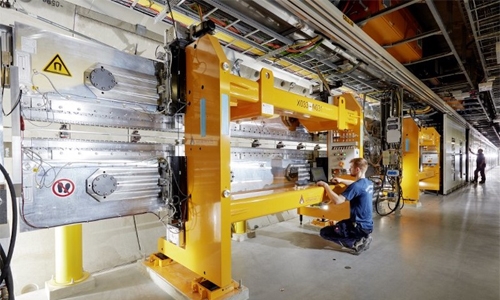World's biggest X-ray laser opens vast research vistas
Paris : A sleek, subterranean X-ray laser to be unveiled Friday in Germany, by far the most powerful in the world, has scientists in a dozen fields jostling to train its mighty beam on their projects.
European XFEL will reveal -- and capture in images -- secrets at the sub-atomic level, promising breakthroughs in medicine, biology, energy, information technology and chemistry.
It will map the molecular architecture of viruses and cells; render three-dimensional nano-scale snapshots; and film chemical reactions as they unfold.
Earth scientists should be able to duplicate and study processes occurring deep inside planets, including our own.
"The laser is the biggest, and the most powerful, source of X-rays ever made," Olivier Napoly, a member of the French Atomic Energy Commission who helped build the complex, told AFP.
The European X-Ray Free Electron Laser, or XFEL, is lodged in a series of tunnels up to 38 metres (125 feet) underground near the city of Hamburg.
Its centrepiece is the world's longest -- 1.7 kilometres (one mile) -- superconducting linear accelerator, designed to provide the energy needed to generate X-ray flashes a billion times brighter than the best conventional radiation sources.
That's 27,000 X-ray flashes per second, compared to the 120/sec produced by a laser of the same type at the US National Accelerator Laboratory in Stanford, California, and 60/sec generated by another in Japan.
For X-ray lasers, brilliance is measured in the number of photons -- sub-atomic light particles with no electric charge that move at the speed of light -- generated at a certain radiation wavelength, from high-energy gamma- and X-rays, to low-energy infrared and radio waves.
The uber-laser is "like a camera and a microscope that will make it possible to see more tiny details and processes in the nanoworld than ever before," Robert Feidenhan'l, chairman of the European XFEL management board, told AFP.
Here's how it works: To generate X-ray flashes, bundles of electrons are first accelerated to high energies near the speed of light.
Related Posts

